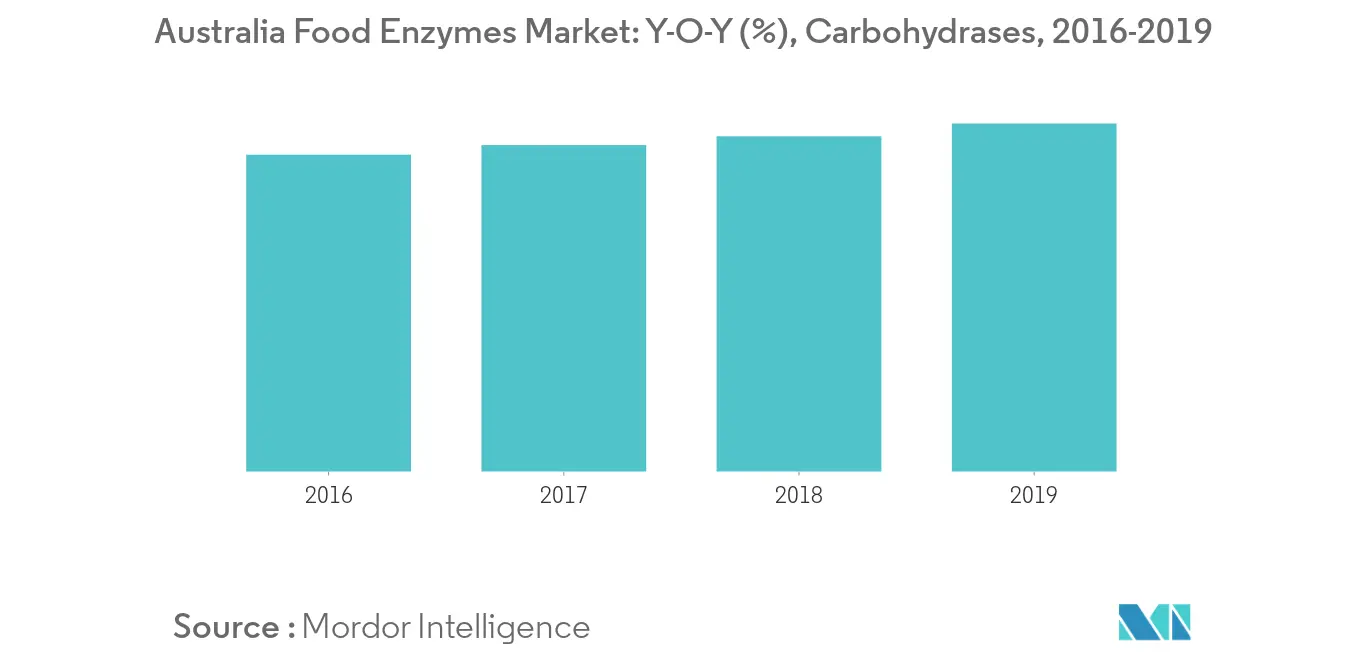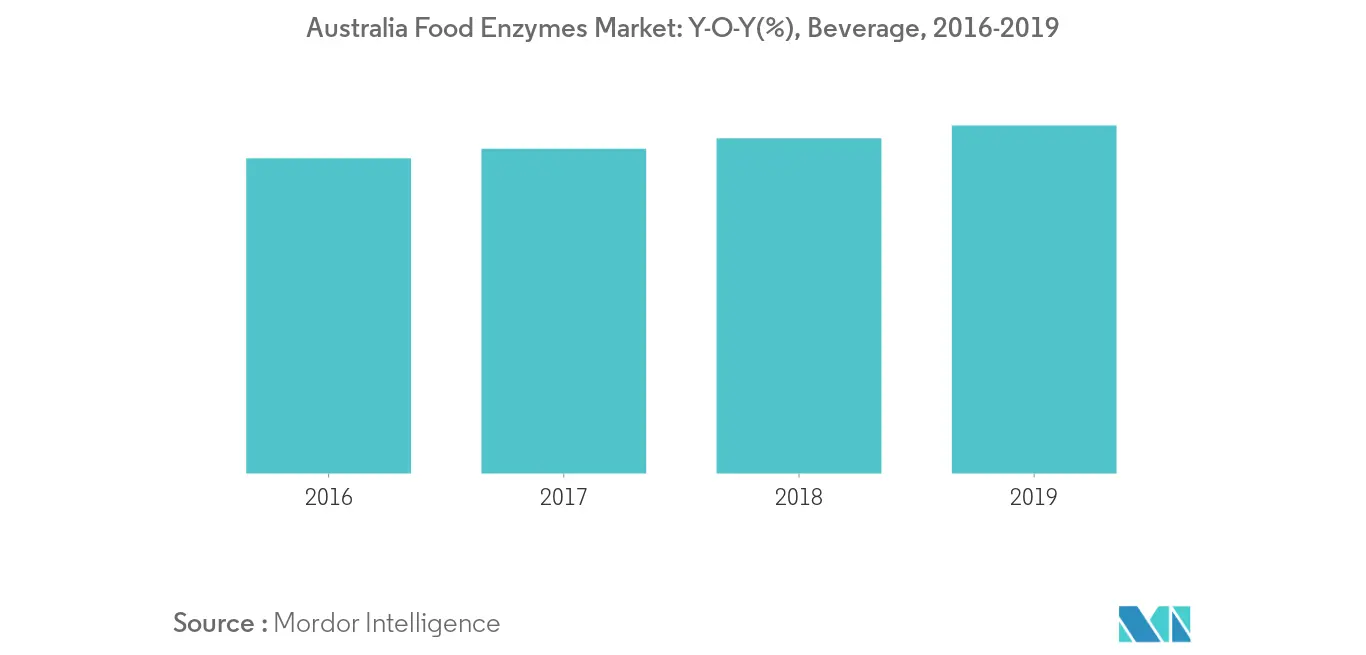Market Trends of Australia Food Enzymes Industry
This section covers the major market trends shaping the Australia Food Enzymes Market according to our research experts:
Carbohydrases Holds the Largest Market Share
Carbohydrases can be classified into amylase, cellulase, xylanase, and pectinase, based on the specific class of carbohydrase that is required to break down the cell walls of different plants, made up of different structural carbohydrates. Therefore, the players operating in the market studied are intensively producing carbohydrase to satiate the consumer demand for a better enzyme. Additionally, manufacturers are engaged in the development of a cocktail of carbohydrase enzymes to produce healthier foods and enhance the value of food processing byproducts. The ingredient caters to the market studied with its extensive benefits, including increasing the energy value of cereals and cereal byproducts, improving nutrient release in full-fat vegetable protein seeds and in vegetable protein meals, and enhancing the digestibility of starch in corn-based diets, among others.

Beverage Segment is Likely to Drive the Market
Enzymes are a boon to the beverage industry, as the reactions they catalyze are indispensable for the latter. The beverage segment comprises food enzyme application in alcoholic and non-alcoholic beverages, with carbohydrase and lipase as the major categories of enzymes. Additionally, enzymes provide three major functions, namely, the formation of sugar that is used during fermentation, viscosity control, and chill-proofing for beer. In the brewing industry, the major enzymes used include cellulose, alpha-amylase, and beta-glucanase for the liquefaction, clarification, and supplementing of malt enzymes. Some of the key benefits of brewing enzymes include better malt separation, extraction yield, and beer filtration and stabilization.


